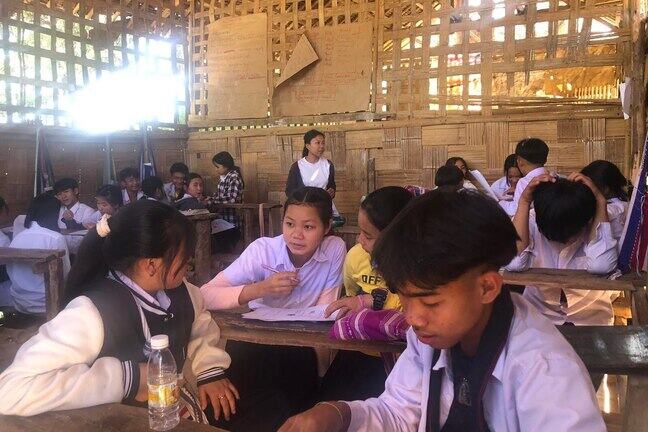2.9 Getting your learners’ perspectives

One way in which we can better understand the different factors shaping children and young people’s lives and learning experiences is to create spaces where we can hear directly from them.
As caring teachers, especially in contexts of conflict and displacement, we need to listen to our learners to understand their needs, as well as how they can learn best. Only then can we make positive and sustainable changes to how we approach teaching and learning. This means spending time listening to the learners, as well as our colleagues, and building trust.
Here are three ways of embedding listening to learners into classroom practice:
Practical questioning and assessment
Practical questioning techniques can be a useful way of helping students engage with the lesson and achieve a deeper understanding. This will also provide you with valuable information on student’s strengths and weaknesses for future lesson planning. Read the Learn, Choose, Use document provided by the Inclusive Education Foundation (InEd) to find about techniques you can use to prompt questions using flashcards, venn diagrams, T diagrams, tree diagrams and more. (You can find the Burmese version here and also find the documents in the Downloads section.)
Listening to learners
At Marist Asia Foundation (MAF), one month after the beginning of the year, every student is invited to write on a piece of paper what is going well and what is not going well with their lives and learning. They share these papers with the teacher. The aim is for the teachers to identify any problems students are having which might cause them to leave school. The head teacher learns what struggles exist for students very early in the year. Whenever there are problems in particular year groups, MAF teachers repeat this activity to help better understand the obstacles to learning.
Checking prior knowledge
By asking questions at the beginning of a lesson, you can check your learners’ prior knowledge. If you also ask questions at the end of the lesson, you can see what the students have learnt and how well they understood the lesson. From their answers, you can check if learners need more explanation, discussion or practice to fully understand the lesson.
Over to you
Do you have activities or routines that you use regularly to create space for listening to learners? Please share your approach in the forum.
© UCL and the Inclusive Education Foundation (CoMOOCs Team), CC BY 4.0
